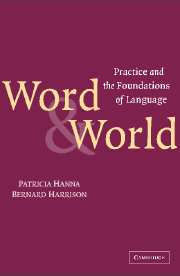2 - Referential Realism
Published online by Cambridge University Press: 05 June 2012
Summary
From correspondence to realism
When once adopted on those grounds, especially by minds that, like that of the early Russell, happen to be sympathetic to empiricism, while at the same time repelled by any form of Idealism, the Correspondence Theory can very easily be reworked to provide the basis of a form of Realism – call it Referential Realism – definable by its opposition to two opposing views: Conventionalism and Relativism. The Referential Realist shares Locke's conviction that what we say has a bearing on reality only if its content is “conformable” to “some real being.” The Referential Realist need not, of course, commit himself to any view concerning the identity of the ultimate content-bearing elements of a language. It is indifferent to him, for instance, whether he sets up his position in terms of names and predicate-expressions, or in terms of sentences, or in terms of theoretically articulated collections of sentences. His claim is, simply, that only if some semantic contents, whatever linguistic entities they may attach to, in some way correspond to, or mirror, actually existing elements of Reality, will it be possible, in the language concerned, to construct propositions having a bearing on reality. Conventionalism, from the Referential Realist's point of view, is the claim that all the entities picked out by the content-bearing expressions of a natural language might be linguistic constructs: entities wholly constituted by linguistic convention. Referential Realism is not, of course, incompatible with the claim that some may be.
- Type
- Chapter
- Information
- Word and WorldPractice and the Foundations of Language, pp. 26 - 44Publisher: Cambridge University PressPrint publication year: 2003



